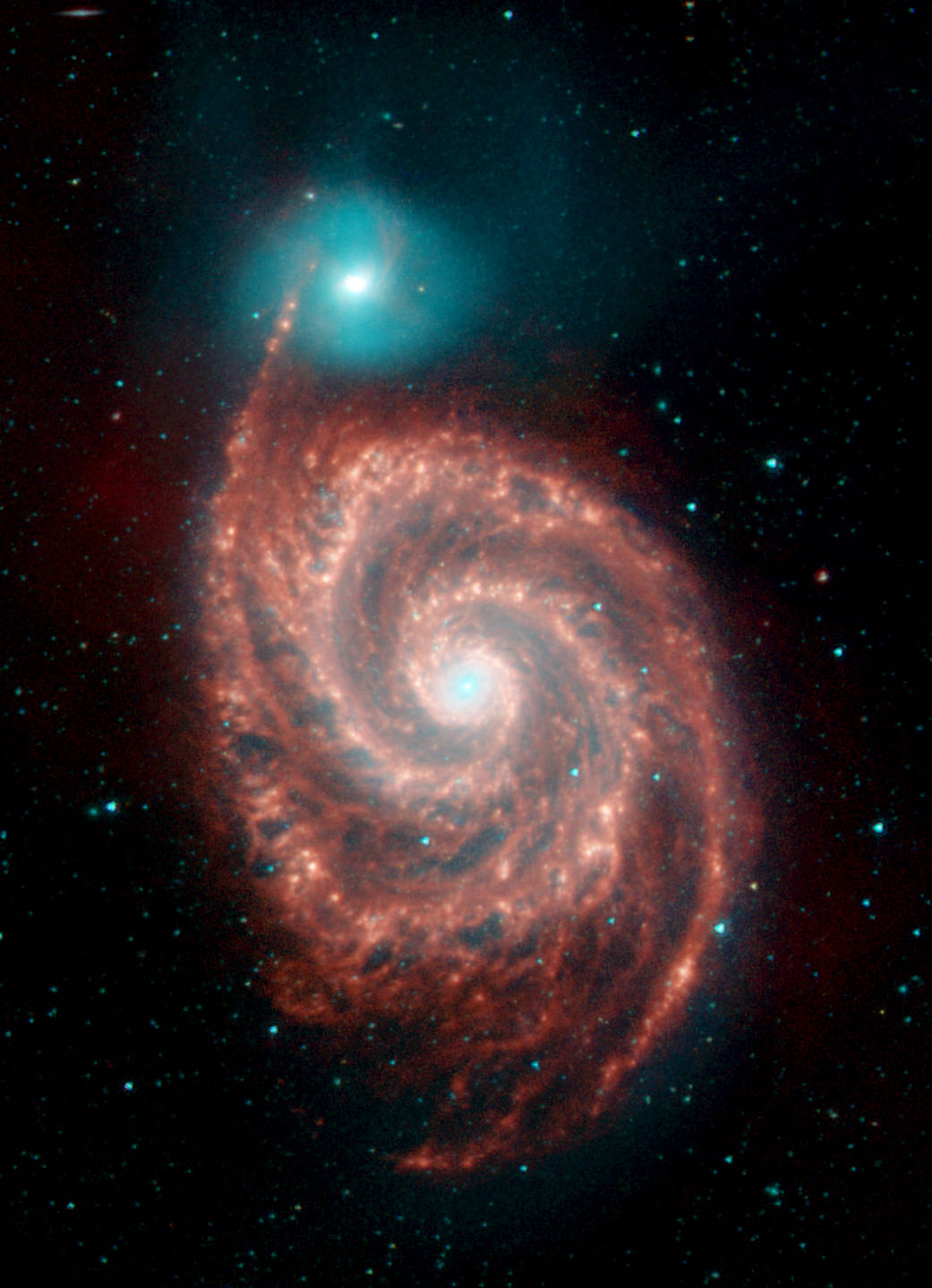NASA’s Spitzer Space Telescope has captured infrared images of the “Whirlpool Galaxy” (M51), revealing strange structures bridging the gaps between the dust-rich spiral arms, and tracing the dust, gas and stellar populations in both the bright spiral galaxy and its companion.
The Spitzer image is a four-color composite of invisible light, showing emissions from wavelengths 10 times longer than those seen by the human eye. A visible light image comes from the Kitt Peak National Observatory 2.1 meter telescope and is also a four-color composite. The Whirlpool Galaxy, 37 million light-years away, is a favorite target for amateur and professional astronomers alike.
The image is part of the Legacy program, which seeks to maximize Spitzer’s scientific output by not only providing the astronomical community with a wealth of raw data as quickly as possible, but by offering more friendly, or enhanced, products. These include stitched together image mosaics, catalogues of space objects, and auxiliary data from other telescopes.Photo Credit: NASA, JPL-Caltech, R. Kennicutt (University of Arizona)
1 min read


























